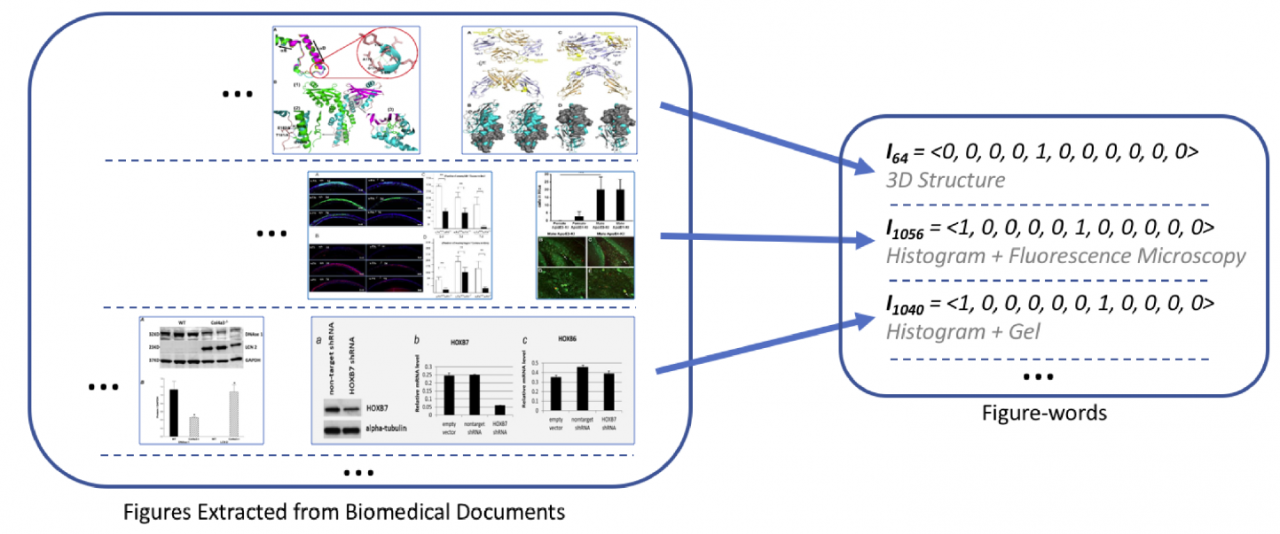|
|
||||||||||||||||||
Utilizing Image and Caption Information for Biomedical Document Classification
Authors: Li, P., Zhang, G., Jiang, X., Trelles Trabucco, J., Raciti, D., Smith, C., Ringwald, M., Marai, G.E., Arighi, C., Shatkay, H.
Publication: Bioinformatics, ISMB/ECCB 2021, vol 37, Oxford University Press, pp. i468–i476 URL: https://academic.oup.com/bioinformatics/article/37/Supplement_1/i468/6319676 Motivation: Biomedical research findings are typically disseminated through publications. To simplify access to domain-specific knowledge while supporting the research community, several biomedical databases devote significant effort to manual curation of the literature - a labor intensive process. The first step toward biocuration requires identifying articles relevant to the specific area on which the database focuses. Thus, automatically identifying publications relevant to a specific topic within a large volume of publications is an important task toward expediting the biocuration process and, in turn, biomedical research. Current methods focus on textual contents, typically extracted from the title-and-abstract. Notably, images and captions are often used in publications to convey pivotal evidence about processes, experiments and results. Results: We present a new document classification scheme, using both image and caption information, in addition to titles-and-abstracts. To use the image information, we introduce a new image representation, namely Figure-word, based on class labels of subfigures. We use word embeddings for representing captions and titles-and-abstracts. To utilize all three types of information, we introduce two information integration methods. The first combines Figure-words and textual features obtained from captions and titles-and-abstracts into a single larger vector for document representation; the second employs a meta-classification scheme. Our experiments and results demonstrate the usefulness of the newly proposed Figure-words for representing images. Moreover, the results showcase the value of Figure-words, captions and titles-and-abstracts in providing complementary information for document classification; these three sources of information when combined, lead to an overall improved classification performance. Availability and implementation: Source code and the list of PMIDs of the publications in our datasets are available upon request. https://doi.org/10.1093/bioinformatics/btab331 Date: July 25, 2021 - July 30, 2021 Document: View PDF |